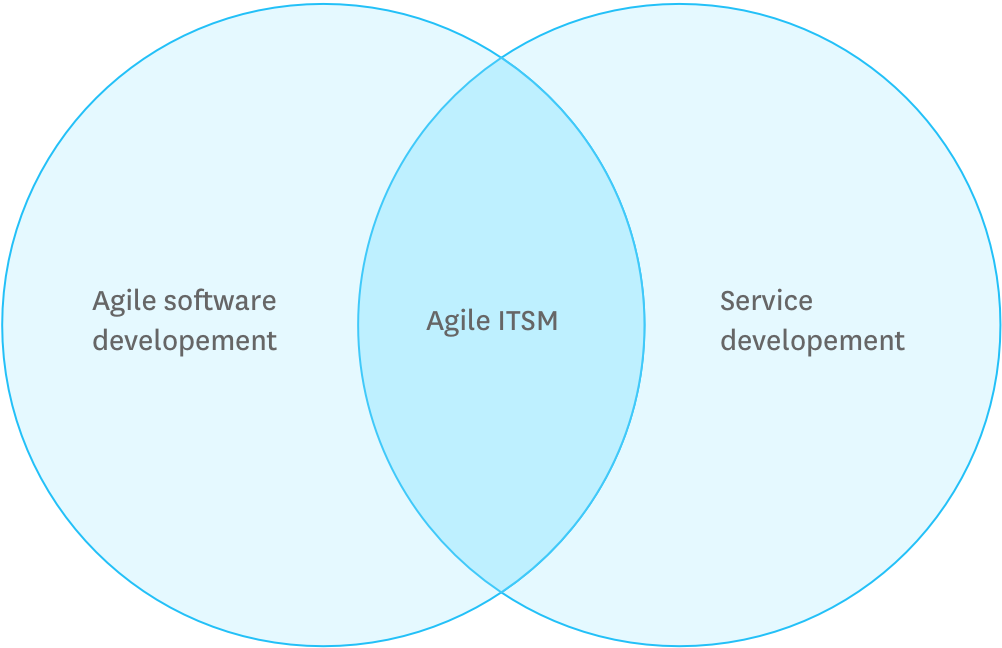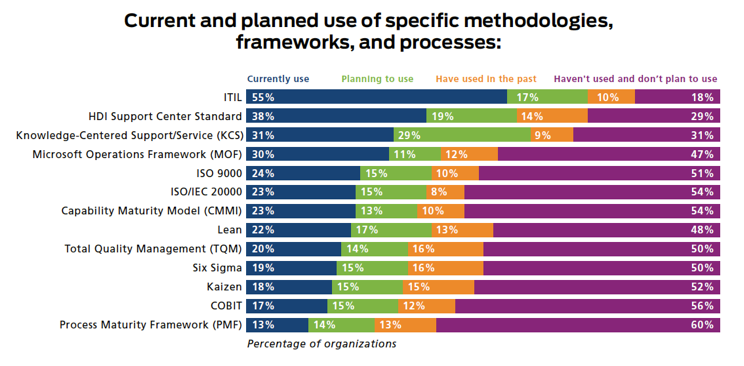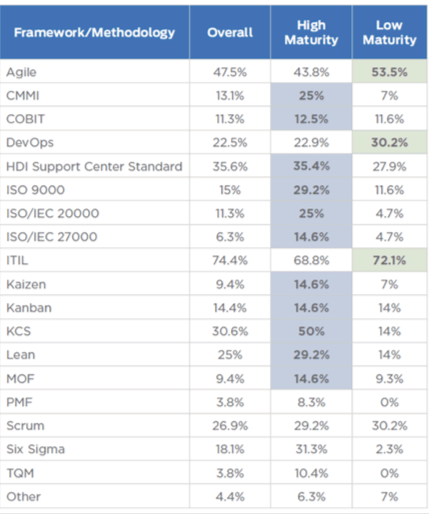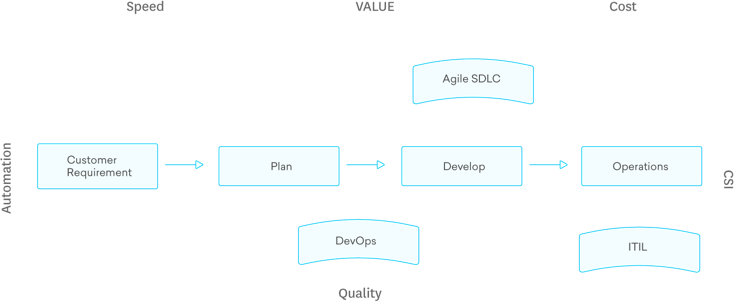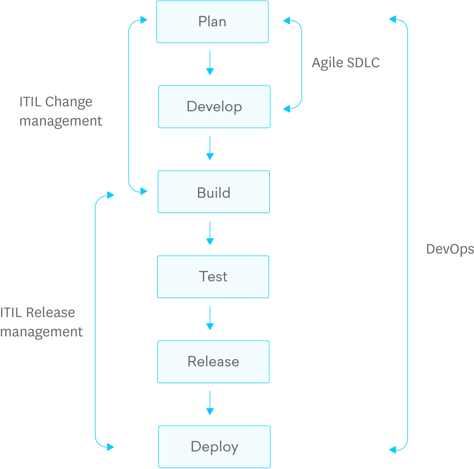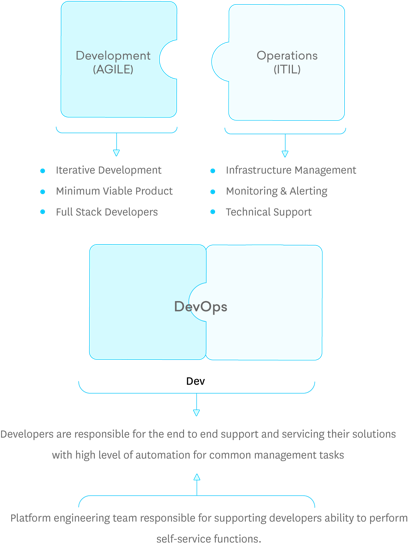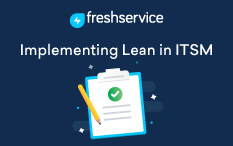- Objectives : Contemporary service management
- Company size : All Sizes
- Industry : All Industries
- Advantages : Integrated frameworks; flexible
Integrated Approach
Traditional frameworks are so rigid for any business to adopt. Therefore, mix and match the best practices that are suitable for your organization. The success recipe is to find the right mix and implement only those that are essential. It is very well agreed to not align with just a single process. Business priorities have changed and they include faster time to market, real customer value. Let us discuss how all these frameworks can contribute to these changing demands.
Source: HDI
Why is Traditional ITIL Not Enough Anymore?
According to HDI survey, 38 % of organizations use a combination of two or more frameworks to support IT. ITIL may not be sufficient to meet increasing customer demands. Businesses need to react faster to remain competitive and agility is crucial to achieving this. Let us discuss some drivers of this behavior.
Demand-Supply Problem
Technological disruptions, changing consumer expectations have increased the demand-supply gap. This increases the pressure on management to innovate and be on top of the game. When the gap increases, traditional frameworks may not be enough. Adoption of Agile and DevOps becomes inevitable in order to accelerate time to market and time to value.
Digital Transformation
Digital transformation involves a lot of changes including cultural, behavioral changes. Collaboration and knowledge sharing is key to this exercise. ITIL Change Management process includes a pre-defined process flow to minimize risk and impact. The current state is maintained and testing ensures everything is under control. Following the ITIL Change Management process is crucial here and DevOps promotes collaboration.
Modern Technologies
Automation capabilities such as Artificial Intelligence (AI), Machine Learning (ML) eliminate routine tasks and reduce waste. Lean principles insist on identifying bottlenecks and eliminating waste. Resource optimization is one of the primary objectives of lean methodologies and therefore, businesses adopt more than one methodology to realize real business value.
The Way Forward
Integrated service management recommends combining several frameworks and methodologies to improve velocity. Service is the baseline across the entire value chain. Cost, speed, and quality are three attributes of service. Different frameworks contribute to achieving these metrics. Agile software development delivers speed, Lean thinking results in cost optimization and ITIL & DevOps provides service quality.
Speed - AgileCost - LeanQuality - ITIL +DevOps
Convergence of Frameworks
Businesses are likely to implement more than one framework depending on their needs. Ensure all frameworks are aligned with your organization’s vision and business model. The above model describes the convergence of different frameworks, philosophies, and models. DevOps span across service design and service transition stages of the ITIL service lifecycle. Continuous Delivery is a DevOps practice that includes Continuous Integration and Deployment.
- ITIL Change Management process is used for evaluation and planning
- The actual development follows the Agile methodology to execute and release faster. Lean Kanban method is a visual representation that is used to understand Work in Progress (WIP). ITIL Release Management along with Agile software development helps deliver projects on time.
- Embrace DevOps philosophy to collaborate between Development and Operations effectively.
- Post implementation support is handled by ITIL incident and Problem Management to solve any escalations.
Implementation Approach
- Start with “as-is” analysis - Assess the current state and frameworks implemented. Understand the organizational maturity and the challenges faced by customers.
- Conduct a gap analysis to understand customers’ requirements and services delivered. Understand the business vision and validate with the service model.
- Get the basics right about different frameworks and implement the right mix of frameworks to address the current challenges.
- Implement more than one framework whenever necessary. Monitor the results and compare performance improvements.
- Revisit implemented frameworks and improve based on results and latest updates.


